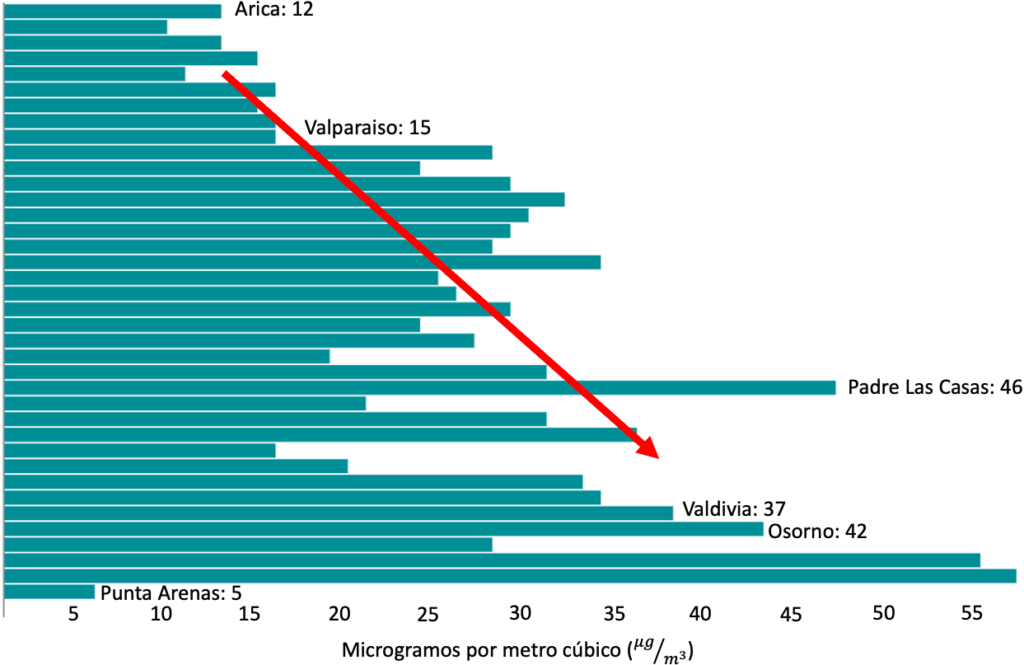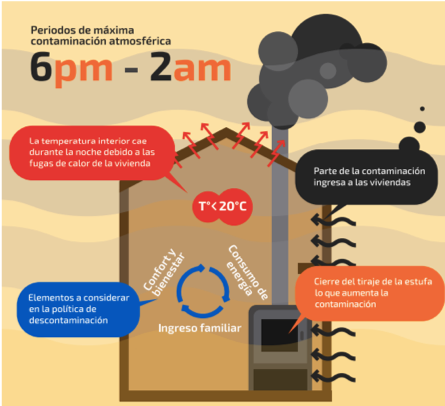Energy efficiency is the adoption of a set of actions and measures to reduce energy consumption and associated pollution without affecting life quality of the families.
In central-southern Chilean houses (with cold and rainy weather for most of the year), energy consumption levels for heating shoot up and come mainly from firewood and pellets. This has caused significant impacts on the environment and the welfare of society, such as deforestation, urban air pollution, and alarming situations of energy poverty.

Hence, since 2000, different regulations and subsidies have been implemented in Chile which focus on (1) improving biomass combustion technologies or implementing other heating systems, (2) ensuring the commercialization of dry firewood, and (3) performing thermal retrofit in houses through subsidies that target the most vulnerable socioeconomic sectors of the country. This set of measures, however, has not had the expected effect, since air pollution in the cities of southern Chile has continued to increase year after year.
This context shows the importance of analyzing why the measures
implemented by the state have not worked as expected, and what elements of energy efficiency are key to develop public policy strategies. This line of research particularly studies the technological dimension of residential energy consumption, especially with regard to heating systems and the thermal performance of houses in southern Chile. Studies carried out by BES demonstrate that air pollution is exacerbated by both: the heating system and the thermal performance of central-southern Chilean houses (Figure 2). Thus, to address this aspect is essential to environment and life quality.

Sistema Nacional de Información Ambiental. s.f. Calidad del Aire: Promedio trianual de concentraciones de Material Particulado (MP2,5) en estaciones de monitoreo del país. Consultado el 3 de septiembre de 2020. Disponible en: Estado del Medio Ambiente.
Reyes, R., Schueftan, A., Ruiz, C. 2018. Control de la contaminación atmosférica en un contexto de pobreza de energía en el sur de Chile: Los efectos no deseados de la política de descontaminación. En: Informes técnicos BES, Bosques – Energía – Sociedad, Año 4. N° 9. Marzo 2018. Observatorio de los Combustibles Derivados de la Madera OCDM. Instituto Forestal, Chile. p. 22.



